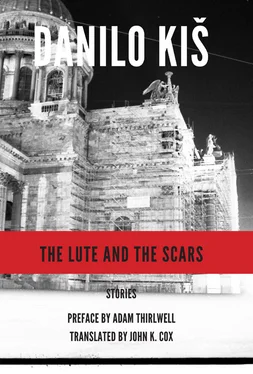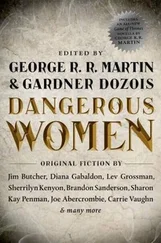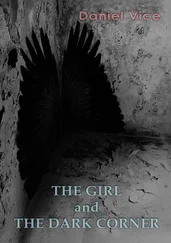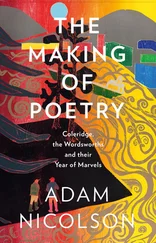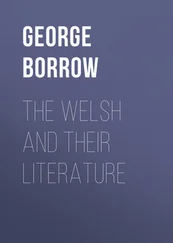Jurij Golec
In the last three of the seven tables of contents for The Encyclopedia of the Dead , the titles “Jurij Golec” and “The Lute and the Scars” both appear, in this order. In the seventh table of contents, both titles are crossed out by hand. Why were both removed, even though they dovetail with the basic theme of the book (both find their “metaphysical bearings” in love and death)? The reason (the only reason for which material evidence can be adduced) should perhaps be sought in the radical shift in style that comes from adjusting to their autobiographical, non-fictional character. In their stead “Red Stamps with Lenin’s Picture” appeared at the last minute. We say “last minute” because the title of this other story is not found in any of the tables of contents, something that indicates that it was added to the manuscript just before it was turned over to the publisher. This piece of “fantasy” combines the worlds of the two stories while hewing more closely to the style of the whole Encyclopedia . Whether or not the inclusion of “Stamps” necessitated the exclusion of the other two stories for purely literary reasons is a question of another order, and one that does not lie within the scope of these notes.
The story “Jurij Golec” is preserved in manuscript form in four versions (not counting the layers of “palimpsests” created by revisions in the author’s hand), totaling one hundred and nineteen typed pages, to which should be added fifty-five additional pieces of paper with variations on individual passages or notes and sketches. The sequence of the versions can be established with little difficulty. The first comprises twenty-six pages and has the title “The Actor”; the second, untitled version is forty pages long. Both of these versions contain only the first half of the story. The third version, and the fourth, definitive one, both bearing the title “Jurij Golec,” are of almost equal length (27 and 26 pp.). The fundamental differences between the four versions are the visible reduction in text and the replacement of real personal names with fictitious names or initials. The basic technical issue, which is the main reason that multiple versions exist, is how to depict dialogue without narrative lulls or awkwardness. The customary forms “she said,” “he said,” or “I said,” and so forth, are reduced to an absolute minimum (and in the final text are only used when needed for rhythm or comprehension). The basic events, characters, and situations, however, remained unchanged.
In view of the fact that this story was planned to be a part of The Encyclopedia of the Dead , Kiš wrote a note that was supposed to be included in a general postscript, which we have appended to the story in this volume, rather than place here among the notes. It was our view that the subsequent revelation of the hero’s identity retrospectively underscored the nonfictional nature of the story, whereas the typical novelistic feature of a “note” would broaden to too great a degree the world of the basic narrative. In terms of form, we find this is justified by the fact that the story “The Short Biography of A.A. Darmolatov” (in A Tomb for Boris Davidovich ) concludes with an italicized postscript.
The Lute and the Scars
“The Lute and the Scars” was also conceived as part of The Encyclopedia of the Dead . We have already made mention (see previous note) of some of our hypotheses about the reasons this story, as was the case with “Jurij Golec,” did not make it into the collection. Two versions are preserved in manuscript form: the first, without a title, contains seventeen typed pages (fifteen of which are sequentially paginated, though among them are inserted two pages with the designations “2a” and “6a”); the second, entitled “The Lute and the Scars,” consists of fourteen unfilled pages. Versions of the introductory section of the story make up most of the content of another sixteen pages. And, again, it is to the story itself that we attached the “note” that was foreseen as a general postscript. In this case we acted with much greater hesitation than with “Jurij Golec.” The reasons were that this note has primarily a theoretical and meta-textual function: it specifies the genre (creative nonfiction), with an additional reference to the story “Jurij Golec.” The gulf between Kiš’s narration and his commentary is much wider here. The fact is, however, that the word “note” itself seems intended to strengthen, even to guarantee, the truthfulness of the story (even, if nothing else, by comparison with the foregoing story, in which the inclusion of the fictional was a kind of obligation).
Let us now shift our attention to the thematic uniqueness of this story in the context of Kiš’s literary oeuvre: this is the only piece that one could label a “Belgrade story.” The piece was written at the start of 1983, as a late look back at his own younger years, with a double distancing from the objects he is describing: in terms of space, since at that time Kiš was living in Paris, and likewise at a chronological remove (the story takes place during the 1950s, with one episode from the end of the 1960s). Everything in the piece is tied up with a quintessential story of emigration, the roots of which reach back to the Russian Revolution. And it is precisely this aspect of the story that links it, along with “The Book of Kings and Fools” (from The Encyclopedia of the Dead ), to the world of A Tomb for Boris Davidovich . The reference to The Protocols of the Elders of Zion is not simply part and parcel of Kiš’s memories of his youth (and an indirect reference to two treatments of the subject that Kiš penned much earlier, both published in the newspaper Ovdje (Here): “On Céline” from April 1971 and “Anti-Semitism as a Way of Looking at the World” from June of the same year), but also a representation of the subtle affinities between these two stories. (For example, the profession of the hero of “The Book of Kings and Fools,” Belogortsev — a forestry engineer — along with a few other details that the attentive reader will unearth.)
The Poet
Although the title “The Poet” is not mentioned in any of the tables of contents for The Encyclopedia of the Dead , one handwritten fragment, found among texts that can with certainty be linked to that book, shows us to be justified in placing the story into this context. This is the fragment:
A story about a professor who writes a
sonnet against Tito and the Party.
After years of a sentence of hard labor,
this sonnet has been reworked into
a paean.
They bring Ranković to see him, etc.
Two sonnets.
On the back of one page of notes to “Jurij Golec” we find the following written by hand:
For the story:
1. The mayor destroys the park.
2. Sonnet (of a reactionary)
The manuscript of “The Poet” consists of thirteen continuously paginated typed pages. Corrections were made in three rounds: with a pencil and with fine blue and black ballpoint pens. There are no other related papers: the story came into existence in one sitting, with only superficial changes.
The appearance of this story among Kiš’s short fiction is not, however, accidental. Traces of his reflections on the postwar years are to be seen in his notes, in his sketches of imaginative literary subjects, and in fragmentary autobiographical notes relating to the Cetinje period of the author’s life. From among the large number of such notes we will reproduce here a few that correspond to this story:
“[P]arty spirit” in literature; the revolution isn’t for young ladies; terror in school: tight pants (“knickerbockers”), haircut, etc. morale; Lenin-Stalin in physics, history, math, etc; language: the manner of speech of politicians and peasants; warehouses belonging to government ministries.
Читать дальше
